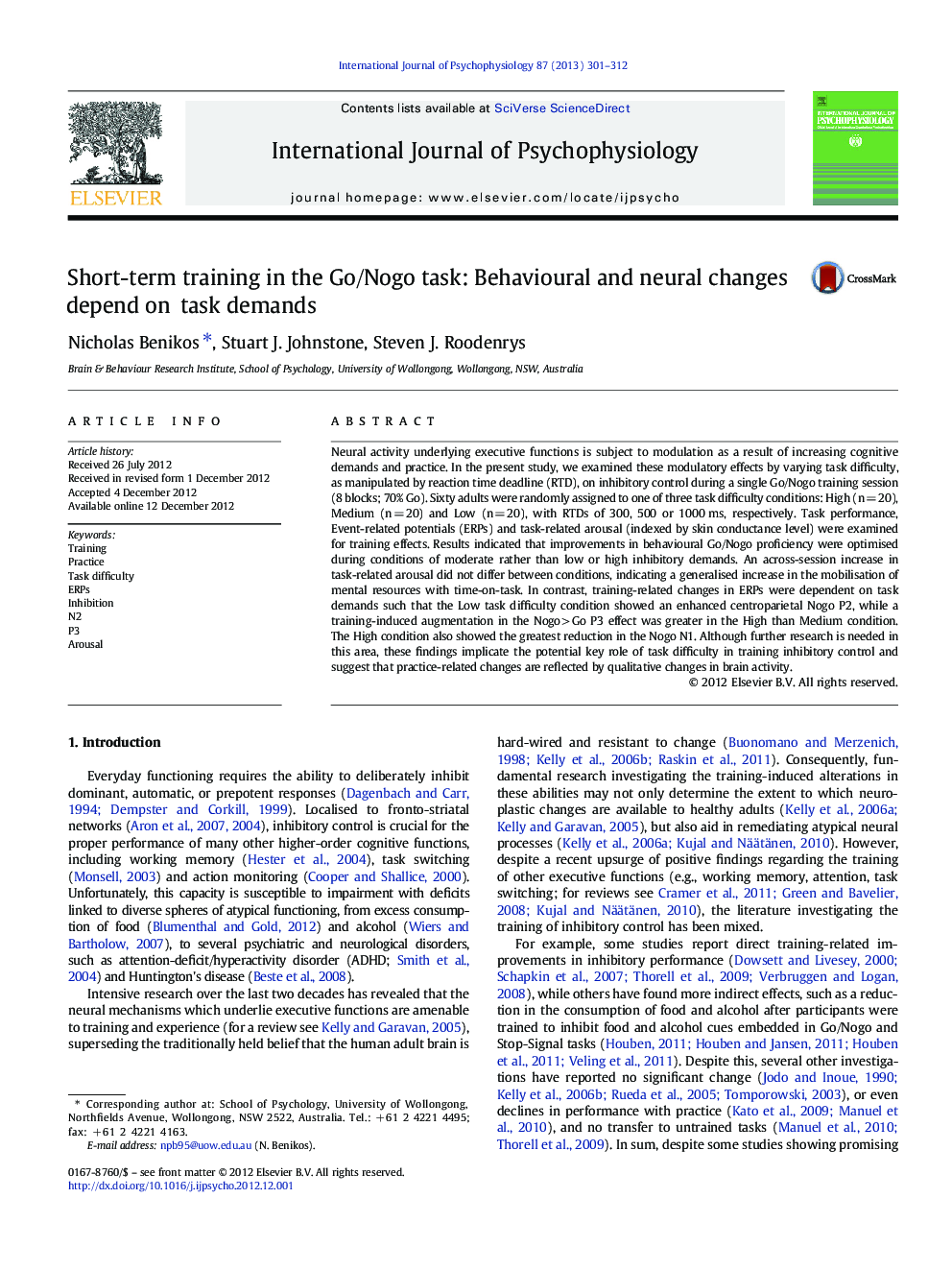| کد مقاله | کد نشریه | سال انتشار | مقاله انگلیسی | نسخه تمام متن |
|---|---|---|---|---|
| 930083 | 1474433 | 2013 | 12 صفحه PDF | دانلود رایگان |

Neural activity underlying executive functions is subject to modulation as a result of increasing cognitive demands and practice. In the present study, we examined these modulatory effects by varying task difficulty, as manipulated by reaction time deadline (RTD), on inhibitory control during a single Go/Nogo training session (8 blocks; 70% Go). Sixty adults were randomly assigned to one of three task difficulty conditions: High (n = 20), Medium (n = 20) and Low (n = 20), with RTDs of 300, 500 or 1000 ms, respectively. Task performance, Event-related potentials (ERPs) and task-related arousal (indexed by skin conductance level) were examined for training effects. Results indicated that improvements in behavioural Go/Nogo proficiency were optimised during conditions of moderate rather than low or high inhibitory demands. An across-session increase in task-related arousal did not differ between conditions, indicating a generalised increase in the mobilisation of mental resources with time-on-task. In contrast, training-related changes in ERPs were dependent on task demands such that the Low task difficulty condition showed an enhanced centroparietal Nogo P2, while a training-induced augmentation in the Nogo > Go P3 effect was greater in the High than Medium condition. The High condition also showed the greatest reduction in the Nogo N1. Although further research is needed in this area, these findings implicate the potential key role of task difficulty in training inhibitory control and suggest that practice-related changes are reflected by qualitative changes in brain activity.
► Go/Nogo difficulty manipulated using three conditions: Low, Medium and High.
► Training-related improvements in Go/Nogo proficiency were optimal for the Medium.
► A task-related increase in arousal did not between conditions.
► The Low condition showed an enhanced centroparietal Nogo P2 with training.
► A training-induced augmentation in the Nogo P3 effect was greatest for the High.
Journal: International Journal of Psychophysiology - Volume 87, Issue 3, March 2013, Pages 301–312